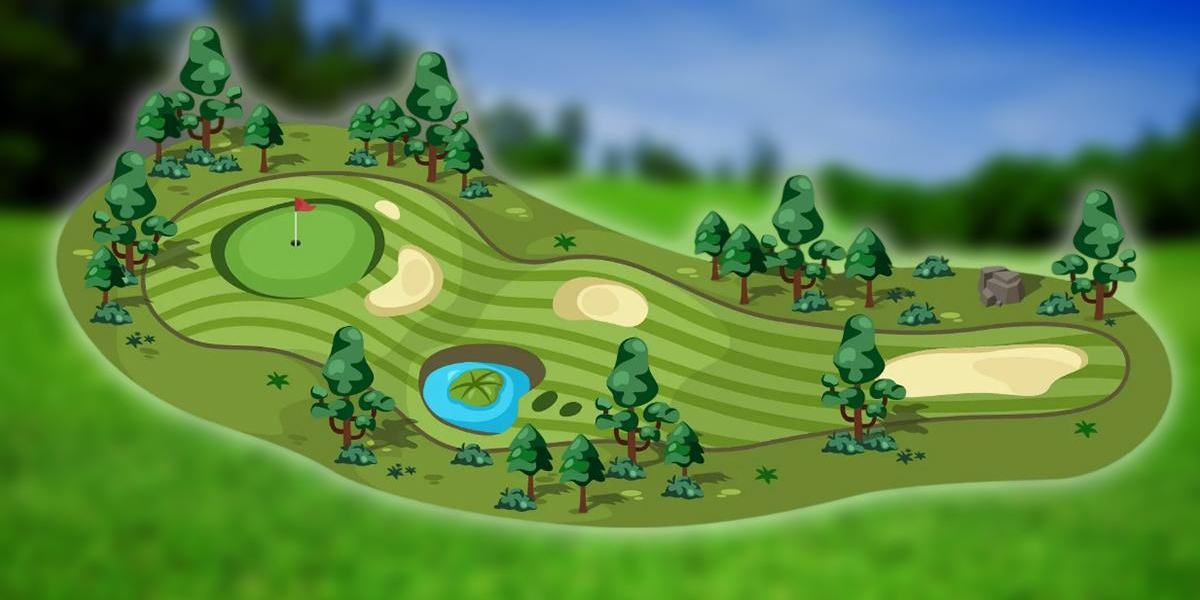When you step onto a meticulously manicured golf course, the lush green landscape is often the first thing that catches your eye. However, what you might not realize is that this carpet of green is more than just grass; it’s a carefully selected and meticulously maintained canvas that fundamentally shapes the way the game is played. The type of grass on a golf course—from the tee box to the green—is one of the most critical factors influencing ball roll, shot spin, and overall playing conditions. Understanding these grass types can provide a deeper appreciation for the art of course maintenance and even give you a strategic edge in your own game.
Broadly speaking, golf course grasses are categorized into two main groups: cool-season grasses and warm-season grasses. The choice between these two families is primarily dictated by the local climate, but within each category, there is a variety of species with unique characteristics.
Cool-Season Grasses: The Northern Powerhouses
Cool-season grasses thrive in regions with cold winters and moderate summers, making them the standard choice for golf courses in the northern United States, Canada, and much of Europe. They have their peak growth in the spring and fall and can withstand lower temperatures.
Bentgrass (Agrostis spp.): This is the gold standard for putting greens in cool climates and is also often used for fairways and tee boxes. Bentgrass is renowned for its fine texture, high density, and ability to be mown to an extremely low height, which creates a smooth, fast putting surface. Its deep root system also helps it withstand heavy foot traffic. The downside is that it requires intensive maintenance, including regular mowing, aeration, and protection against diseases like dollar spot. On a bentgrass green, a putt will roll very true and fast, and a well-struck approach shot will hold its line beautifully.
Poa Annua (Poa annua): Also known as annual bluegrass, Poa annua is a cool-season grass that is a bit of a paradox in the golf world. While it is considered a weed by many superintendents, it has become the dominant grass on many older, classic courses, especially on the West Coast. Poa annua provides a dense, soft surface that putts very well when healthy. However, its shallow root system makes it less drought-tolerant, and its seed heads, which appear in late spring and early summer, can create a bumpy, inconsistent putting surface. A key characteristic is its color, which can be lighter than other grasses.
Kentucky Bluegrass (Poa pratensis): Known for its beautiful deep blue-green color and exceptional durability, Kentucky bluegrass is a common choice for fairways and roughs in cool-season climates. It forms a dense, traffic-tolerant turf through underground stems called rhizomes, which allow it to recover quickly from damage. While it's not typically used for greens due to its coarser texture and inability to be cut as short as bentgrass, it provides an excellent, playable surface for fairways and a formidable challenge in the rough.
Ryegrass (Lolium perenne): Perennial ryegrass is often used in mixes with Kentucky bluegrass for fairways and roughs due to its rapid establishment and durability. Its fine blade and ability to withstand heavy traffic make it a great choice. It is also a key player in "overseeding" practices, where it's planted over dormant warm-season grasses in the fall to provide a lush green playing surface throughout the winter.
Warm-Season Grasses: The Southern Saviors
Warm-season grasses are the workhorses of golf courses in the southern United States, the Caribbean, and other tropical and subtropical regions. They thrive in heat and are drought-tolerant, but they go dormant and turn brown during the winter months.
Bermudagrass (Cynodon dactylon): This is the most common and versatile warm-season grass used on golf courses. Bermudagrass is tough, resilient, and can be mown at a very low height, making it an excellent choice for greens, fairways, and roughs. It has a high tolerance for heat and traffic and recovers quickly from damage thanks to its aggressive growth habit. However, Bermudagrass greens have a distinct grain, meaning the direction the blades of grass are growing can significantly affect the speed and break of a putt. Learning to read the grain is a key skill when playing on a Bermudagrass course.
Zoysiagrass (Zoysia japonica): Praised for its incredible density and beautiful emerald-green color, Zoysiagrass is a popular choice for fairways. Its stiff, upright blades create a dense mat that holds the ball up well, often described as playing like it's on a tee. This can be a boon for fairway lies but a major challenge in the rough. Zoysiagrass is highly drought-tolerant and requires less fertilization and water than many other grass types, making it a more sustainable option.
Paspalum (Paspalum vaginatum): Also known as seashore paspalum, this grass is a top choice for coastal courses and those with a high salt content in their soil or irrigation water. It boasts exceptional salt tolerance and a brilliant green color. Paspalum can be mown very low and is known for its playability and ability to be maintained with fewer chemicals. While it provides a fantastic surface for all areas of the course, its density can make it difficult to hit out of the rough.
Grass by Golf Course Area: A Strategic Approach
Golf course superintendents often use different grass types for different areas to optimize playability and maintenance.
Greens: The goal here is a smooth, fast, and consistent putting surface. Bentgrass is the premier choice in cool climates, while Bermudagrass and sometimes Paspalum are dominant in warm climates. The choice is a balance of playability, maintenance cost, and climate resilience.
Fairways: Fairways need to be durable enough to handle heavy traffic and provide a clean, consistent lie for approach shots. Kentucky bluegrass and ryegrass blends are common in the north, while Bermudagrass and Zoysiagrass are the go-to choices in the south.
Roughs: The rough's purpose is to challenge the golfer, punishing errant shots. The grass here is typically a taller, tougher version of the fairway grass or a specific species that creates a dense, difficult lie. This might be a mix of fescues or a taller cut of Bermudagrass or Kentucky bluegrass.
The Impact on Your Game
Understanding the grass you're playing on can dramatically influence your strategy. On a Bermudagrass green, you must consider the grain and how it will pull your putt. On a Bentgrass green, you can be more confident that your putt will hold its line. Hitting a shot from a Zoysiagrass fairway often requires a slightly different approach than from a soft Kentucky bluegrass lie. The next time you're on the course, take a moment to look down and appreciate the intricate design of the turf beneath your feet. It’s more than just grass; it’s an integral part of the game you love.







